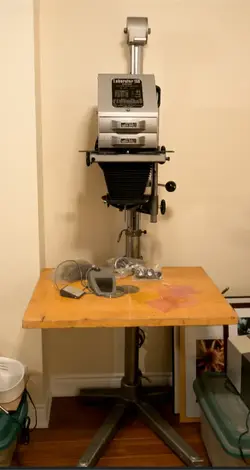ac12
Been spending a lot of time on here!
- Joined
- Dec 5, 2017
- Messages
- 2,640
- Reaction score
- 914
- Location
- SF Bay Area, California, USA
- Can others edit my Photos
- Photos NOT OK to edit
.........It is a rare bathroom indeed that is actually large enough and with enough counter space to function as a decent darkroom. ............
For a couple years, I set a sheet of plywood on my bathtub and used that as a 'counter'. Yes, way too low to be sure. But functional for the enlarger and trays.
I did similar in one of my apartments, a partial sheet of 1/2 inch plywood over the tub for the enlarger, and it worked out quite well.
I just sat on a foot stool while I worked on the enlarger.
I built a portable counter extension that fit over the toilet, where I had some of my trays. I don't remember but may have used another plywood sheet, over the tub for some of the trays.
If you are resourceful you can do a LOT in a small bathroom.
In my current home, I use a small half bath as my darkroom . . . to print.
Small Durst M600, 6x6 enlarger on the toilet.
Rocking print tray or drum to process the print = minimal need of counter space.
Washing is done in the nearby kitchen.
Film developing (35mm and 120) in comparison to printing is easy.Rocking print tray or drum to process the print = minimal need of counter space.
Washing is done in the nearby kitchen.
The only issue is finding a DUST-FREE place/enclosure to dry the film.




![[No title]](/data/xfmg/thumbnail/35/35956-7047189d31e1c1f6029266079390f54a.jpg?1734167778)








